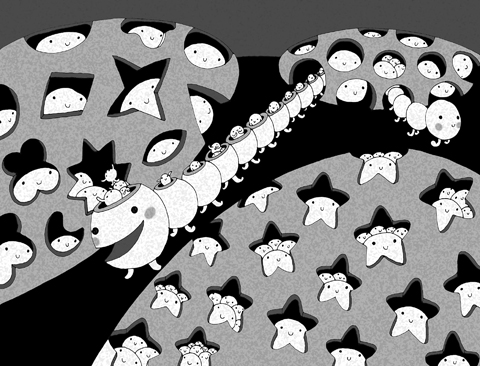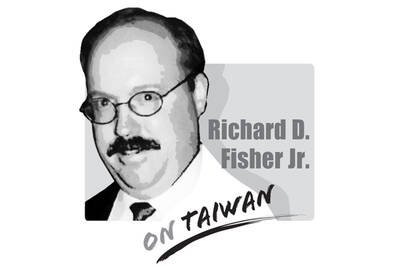While the rest of the world struggles, developing Asia is shifting from recession to recovery.
The latest economic indicators from the world’s advanced economies remain mixed. There are some signs of stabilization — industrial output and consumer spending are, for example, falling much more slowly than they were. But stabilization does not mean imminent recovery. The pace of the deterioration may be slowing, but a decline is still a decline. Unemployment is still on the rise. Consumer and business confidence has not recovered. It is clear that the recession has yet to bottom out in the US and Europe.
By contrast, signs are much more favorable in Asia. Markets, which are typically the first indicators of recovery, are rebounding much more sharply here. While the Dow Jones Industrial Average rose 11 percent in the second quarter, Japan’s Nikkei 225 jumped 23 percent. Equity markets in China rose 25 percent, India 53 percent and Vietnam 60 percent.

Asia’s real economy is also doing much better. Industrial production in South Korea, Singapore and Thailand has been rising in recent months. And while most economies in Asia have suffered their worst performance since the 1997-1998 Asian financial crisis, we believe they have hit bottom.
ADB forecasts that GDP growth for emerging East Asia will still be 3 percent this year. While that’s a significant reduction from the 6.1 percent growth last year, it is growth nonetheless — and much better than other regions of the world.
Will Asia lead the global recovery? Quite possibly. We expect a V-shaped recovery — growth in the region is likely to rise to about 6 percent next year. However, this is still two percentage points below the 8 percent average growth between 2003 and 2007. The reason is while we expect government stimulus to boost domestic demand, we doubt the external demand that drove exports during the years prior to the latest crisis will return any time soon. We now see the US economy contracting 3 percent this year, while the economies in Europe and Japan will likely shrink 4.3 percent and 5.8 percent respectively.
China is leading the recovery in Asia. Aggressive government spending — more than 7 percent of GDP this year, and 8 percent next year — could fuel domestic growth. That, in turn, should help other Asian economies recover as they fill Chinese demand for their goods.
China is the biggest offshore buyer of South Korean products and the second largest for Japan, snapping up about a quarter of South Korean exports and one-sixth of Japan’s. About 12 percent of total exports from the five largest Southeast Asian economies — Indonesia, Malaysia, Philippines, Thailand and Vietnam — go to China.
But that won’t be enough to restore developing Asia to the growth levels seen in recent years. For that to begin to happen, consumers in the world’s major economies also need to start buying Asian goods again. The US, Japan and Europe remain major markets for Asian exporters. Intra-Asian trade has grown rapidly in recent years but remains largely based on parts and components rather than final goods. Asians still do not buy finished products made in their own backyard.
In fact, economic growth in the US, Japan and Europe influences East Asia’s regional output at least as much as China’s does. Beijing’s ability to sustain more than 8 percent economic growth is also reliant on a global recovery to provide external demand for its exports. Economic growth that relies on stimulus is not sustainable. Clearly, China or Asia alone cannot be the region’s sole engine of growth. Developing Asia needs two engines — China and, just as important, the major advanced economies.
The implications are clear. First, a rebalancing of the sources of growth is needed. Even if demand in advanced economies recovers to pre-crisis levels, that will not be enough to meet Asia’s expanding exports. The key for sustaining long-term economic growth in Asia is how to strengthen domestic and regional demand.
Governments can no longer rely on export-oriented development strategies. Strengthening social safety nets, broadening and deepening financial markets, supporting small and medium enterprises (especially in services), and increasing exchange rate flexibility will all help strengthen domestic demand. But effective rebalancing requires both demand-side and supply-side polices. Developing more competitive and efficient domestic industries to serve domestic markets will take time.
Second, to avoid any repeat of the global financial crisis, the region’s policymakers should improve and streamline their regulatory and supervisory regimes, while reinforcing regional and global cooperation. By and large, emerging East Asia’s financial systems and institutions were shielded from the direct impact of the global financial crisis. The resilience of Asia’s banking systems has been attributed to reforms taken following the last Asian financial crisis. Nevertheless, current risk-management and prudential oversight are clearly insufficient. Both banks and regulators must upgrade their systems to prepare for future risks and challenges. The underlying causes of the current global turmoil — emanating from financial innovation and globalization — stress the need to better supervise financial institutions and protect financial stability.
While Asia may already be on the path to recovery, a return to sustained and rapid long-term economic growth will require a rebalancing of the sources of that growth and the safeguarding of financial market stability.
Jong-Wha Lee is the Asian Development Bank’s chief economist.
We are used to hearing that whenever something happens, it means Taiwan is about to fall to China. Chinese President Xi Jinping (習近平) cannot change the color of his socks without China experts claiming it means an invasion is imminent. So, it is no surprise that what happened in Venezuela over the weekend triggered the knee-jerk reaction of saying that Taiwan is next. That is not an opinion on whether US President Donald Trump was right to remove Venezuelan President Nicolas Maduro the way he did or if it is good for Venezuela and the world. There are other, more qualified
China’s recent aggressive military posture around Taiwan simply reflects the truth that China is a millennium behind, as Kobe City Councilor Norihiro Uehata has commented. While democratic countries work for peace, prosperity and progress, authoritarian countries such as Russia and China only care about territorial expansion, superpower status and world dominance, while their people suffer. Two millennia ago, the ancient Chinese philosopher Mencius (孟子) would have advised Chinese President Xi Jinping (習近平) that “people are the most important, state is lesser, and the ruler is the least important.” In fact, the reverse order is causing the great depression in China right now,

This should be the year in which the democracies, especially those in East Asia, lose their fear of the Chinese Communist Party’s (CCP) “one China principle” plus its nuclear “Cognitive Warfare” coercion strategies, all designed to achieve hegemony without fighting. For 2025, stoking regional and global fear was a major goal for the CCP and its People’s Liberation Army (PLA), following on Mao Zedong’s (毛澤東) Little Red Book admonition, “We must be ruthless to our enemies; we must overpower and annihilate them.” But on Dec. 17, 2025, the Trump Administration demonstrated direct defiance of CCP terror with its record US$11.1 billion arms
As technological change sweeps across the world, the focus of education has undergone an inevitable shift toward artificial intelligence (AI) and digital learning. However, the HundrED Global Collection 2026 report has a message that Taiwanese society and education policymakers would do well to reflect on. In the age of AI, the scarcest resource in education is not advanced computing power, but people; and the most urgent global educational crisis is not technological backwardness, but teacher well-being and retention. Covering 52 countries, the report from HundrED, a Finnish nonprofit that reviews and compiles innovative solutions in education from around the world, highlights a